Equities
 Diversification, the Blind Spot of Equity Markets
Diversification, the Blind Spot of Equity Markets
In 2023, equity markets experienced a significant shift with the outperformance of Growth and Cyclical segments, driven by factors such as resilient economic activity, decreasing inflation, and expanded valuation multiples due to the surge in sentiment around generative AI.
 Russia-Ukraine: The Beginning of the End?
Russia-Ukraine: The Beginning of the End?
Two years into Russia’s full-scale war in Ukraine, Loomis Sayles thinks a de facto conclusion to the war is possible within 12-18 months in a manner likely to favor Moscow at Kyiv’s expense.
 Loomis Sayles - Investment Outlook - April 2024
Loomis Sayles - Investment Outlook - April 2024
Loomis Sayles' quarterly outlook on global markets.
 Natixis IM Solutions - Market Review - March 2024
Natixis IM Solutions - Market Review - March 2024
Natixis IM Solutions' monthly view on the markets.
 2024, A Singular Context of Volatility in the Markets?
2024, A Singular Context of Volatility in the Markets?
3 experts at Ostrum AM share their point of view.
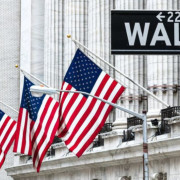 5 Tips for US Equity Investors
5 Tips for US Equity Investors
5 things you may not know about US equities by Ossiam.
 Mirova Monthly Market Review & Outlook – March 2024
Mirova Monthly Market Review & Outlook – March 2024
Mirova's monthly market review and outlook.
 Paris-Aligned Benchmarks (PABs) Explained
Paris-Aligned Benchmarks (PABs) Explained
The climate emergency and its implications forced the asset management industry to develop multiple approaches that aim to address these issues.
 International Markets: What Can Past Events Tell Us About How International Equities Are Priced Today?
International Markets: What Can Past Events Tell Us About How International Equities Are Priced Today?
Despite challenges the past two years, international markets show promise–especially for stock pickers. Is the U.S. stronghold about to shift?
 S&P 500 Index: Are Sector Rotation Approaches More Attractive Than Individual Stock-Picking?
S&P 500 Index: Are Sector Rotation Approaches More Attractive Than Individual Stock-Picking?
S&P 500 stocks move increasingly in line with their GICS® sectors. As a result, investors may look at sector rotation approaches to capture alternative investment opportunities.
 Mirova Monthly Market Review & Outlook – February 2024
Mirova Monthly Market Review & Outlook – February 2024
Read Mirova’s monthly market review and outlook for listed assets.
 Mirova: Listed Assets Annual Market Review & Outlook
Mirova: Listed Assets Annual Market Review & Outlook
Mirova's annual market review and 2024 outlook for listed assets.
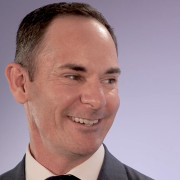 Global Value Investing Re-Interpreted
Global Value Investing Re-Interpreted
Daniel Nicholas, Client Portfolio Manager at Harris Associates, discusses what sets them apart from other managers and the main challenges and opportunities in equity markets.
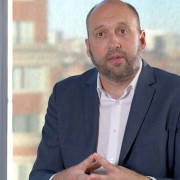 Sustainable Investing: Transformational trends to watch
Sustainable Investing: Transformational trends to watch
Compelling AI applications, renewable energy recovery, and pharma developments are considered for 2024 by Jens Peers.
 Deploying an Ambitious Biodiversity Strategy
Deploying an Ambitious Biodiversity Strategy
In this interview, Hadrien Gaudin-Hamama, Impact & ESG specialist at Mirova, explains the challenges investors are facing regarding biodiversity, and the crucial role they play in acceleration actions.
 Beneath The Surface
Beneath The Surface
By digging deeper and employing our long-term valuation-based approach, there are still opportunities to be had.
 An Unprecedented Situation in Global Equity Markets
An Unprecedented Situation in Global Equity Markets
The rise in global equity markets observed in 2023, through until the summer, was chiefly attributable to expanding valuation multiples in the most speculative sectors.
 Biodiversity: A Step Back To Look At (And Act On) The Big Picture
Biodiversity: A Step Back To Look At (And Act On) The Big Picture
Ossiam explains their food & biodiversity approach illustrated with the case of McDonald’s
 Consistency Trumps Cool in the Search For Alpha
Consistency Trumps Cool in the Search For Alpha
It may not be fashionable, but focusing on downside protection can help beat the index.
 Europe And The Natural Gas Challenge: An Indicator Of Strength?
Europe And The Natural Gas Challenge: An Indicator Of Strength?
In the summer of 2022, Russia cut off most of natural gas supply, threatening European economies. A year on, the energy crisis has faded and Europe has adapted.
 Narrow Breadth
Narrow Breadth
We once again find ourselves in an environment where just a handful of stocks are conveying a skewed view of the path for equities as a whole.
 Natixis IM Solutions – Market Review – June 2023
Natixis IM Solutions – Market Review – June 2023
Natixis IM Solutions’ latest monthly market review
 Climate Portfolio Alignment and Temperature Scores
Climate Portfolio Alignment and Temperature Scores
By using both a simplified example and real data on major stock market indices, Ossiam explains that when it comes to temperature scores, the aggregation method choice is particularly important and full of consequences.
 Viewpoint - Loomis Sayles: Growth Equities And Long-Term Investing
Viewpoint - Loomis Sayles: Growth Equities And Long-Term Investing
Aziz Hamzaogullari, Founder & CIO at Loomis Sayles, explains what investing in the long-term means in the light of recent market events.
 9 Key Questions For Insurers
9 Key Questions For Insurers
Ostrum’s investment management can support insurers’ financial, accounting, regulatory and ESG strategy, as evidenced by Ostrum’s answer to these 9 questions, which are key to insurers
 Impact Investing In Listed Assets
Impact Investing In Listed Assets
Mirova is using every lever available to an asset management company. These include supporting the most active companies in the environmental and social transition, driving strategic change at the heart of major corporations, and mobilizing their ecosystem.
 Food’s Impact On Biodiversity Is A Matter Of Quantity, Not Symbols
Food’s Impact On Biodiversity Is A Matter Of Quantity, Not Symbols
To fully blend biodiversity issues in the financial sector, we need to address two crucial challenges investors are currently facing: data availability and a global target framework to counter biodiversity loss.
 Emerging Market Opportunities Abound
Emerging Market Opportunities Abound
Many high-quality companies can be unearthed if you are willing to turn over some rocks.
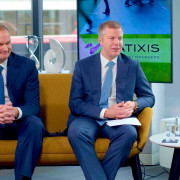 Investing in Water – A Clear View on this Investable Theme
Investing in Water – A Clear View on this Investable Theme
Simon Gottelier, senior portfolio manager, Thematics Asset Management, and Darren Pilbeam, head of UK sales, Natixis IM, discuss with Asset TV the theme of investing in water.
 Growth Investing is Not a Race
Growth Investing is Not a Race
How to achieve long-horizon equity growth with lower volatility.
 Natixis IM Solutions – Market Review – April 2023
Natixis IM Solutions – Market Review – April 2023
Discover the monthly macro and market analysis of Natixis Investment Managers Solutions.
 Trust the Process
Trust the Process
At the start of 2023, the bullish and the bearish investor each had reasonable cases for what this year should bring in the equity markets.
 Loomis Sayles - Investment Outlook - April 2023
Loomis Sayles - Investment Outlook - April 2023
Oftentimes, tighter monetary policy exposes financial excesses and pockets of risk within an economy. In the current late-cycle environment, this may be the case.
 Natixis IM Solutions – Market Review – March 2023
Natixis IM Solutions – Market Review – March 2023
Discover the monthly macro and market analysis of Natixis Investment Managers Solutions.
 Yes, Virginia, There Is [More Than] Hope: Twenty years of sector rotation with Shiller's CAPE® Ratio
Yes, Virginia, There Is [More Than] Hope: Twenty years of sector rotation with Shiller's CAPE® Ratio
This paper argues that the strong performance of the CAPE US is a matter of efficiency rather than “luck”.
 Viewpoints: Equities – Climbing the wall of worry (Thematics)
Viewpoints: Equities – Climbing the wall of worry (Thematics)
Matthieu Rolin, Senior Portfolio Manager at Thematics AM, shares his views on the opportunities in equity markets in 2023.
 Viewpoints: Equities – Climbing the wall of worry (Mirova)
Viewpoints: Equities – Climbing the wall of worry (Mirova)
Jens Peers, CIO, Portfolio Manager at Mirova US, shares his views on the opportunities in equity markets in 2023.
 Biodiversity in a Nutshell
Biodiversity in a Nutshell
What is biodiversity? How do we measure companies' impact on it and how to invest to preserve it?
 Natixis IM Solutions – Market Review – February 2023
Natixis IM Solutions – Market Review – February 2023
Discover the monthly macro and market analysis of Natixis Investment Managers Solutions.
 Natixis IM Solutions – Market Review – January 2023
Natixis IM Solutions – Market Review – January 2023
Discover the monthly macro and market analysis of Natixis IM Solutions.
 Live test in 2022 proved that the low volatility premium is definitively not a bet on interest rates
Live test in 2022 proved that the low volatility premium is definitively not a bet on interest rates
In 2022, the increase in rates which fueled the rise of the equity market volatility and its negative performance, does not explain the outperformance of low volatility portfolios.
 Water as an Investment
Water as an Investment
Companies focused on water supply, demand efficiency and waste management can add defensive growth to portfolios.
 Natixis IM Solutions – Market Review – December 2022
Natixis IM Solutions – Market Review – December 2022
Discover the monthly macro and market analysis of Natixis IM Solutions.
 Paris-Aligned Benchmarks: The Future Standard?
Paris-Aligned Benchmarks: The Future Standard?
Forward-looking ESG approach captures more progressive companies and a wider range of risks.
 Investment Outlook: October 2022
Investment Outlook: October 2022
For Loomis Sayle, the majority of positive developments that propelled markets higher earlier in the current credit cycle are now working in reverse.
 The Power of Green Innovation
The Power of Green Innovation
Mirova aims to help accelerate the environmental and energy transition: working to preserve biodiversity, promote decarbonisation and enable energy independence. Finding the financing to achieve all this is a major issue, especially for emerging companies.
 Investing in Volatile Times
Investing in Volatile Times
Allocations are under review amid sustained inflation and a recessionary environment.
 Putting Purpose Into Value Investing
Putting Purpose Into Value Investing
Funding future liabilities and beating an index should be the aim when hunting for undervalued companies.
 Food for Biodiversity
Food for Biodiversity
Many different types of corporations can have a substantial impact on the future sustainability of the food industry, therefore, investing and enacting change in the right companies may prove crucial for our future.
 The Private Investigator of Asset Management
The Private Investigator of Asset Management
Daniel Nicholas, Client Portfolio Manager at Harris Associates, sat down with Allnews.ch to discuss why pinpointing the true value of a quality stock is like an investigative job.
 Value And Growth: Two Sides Of The Same Coin?
Value And Growth: Two Sides Of The Same Coin?
Deep understanding of companies and viewing ESG as a key input underpin both investment styles.
 Energy Transition: Reconciling Environmental and Social Issues in Europe Amidst Turmoil
Energy Transition: Reconciling Environmental and Social Issues in Europe Amidst Turmoil
How the environmental and social issues associated with the energy sector are addressed through Mirova strategies in the context of the latest European plans.
 Biodiversity and Water...Two Sides of the Same Coin
Biodiversity and Water...Two Sides of the Same Coin
Why does biodiversity matter and what role does water play?
 The Last Free Lunch Is Getting Leaner
The Last Free Lunch Is Getting Leaner
Vaughan Nelson examines the diversification benefits offered by broad market index, highlighting the fact that the S&P 500 index’s risk factor diversification has reduced over time due to the market cap concentration.
 Impossible Emissions
Impossible Emissions
We are still placing too much hope in carbon capture technologies and offsetting mechanisms, but it is increasingly urgent to electrify our uses, to decarbonize the electricity produced and more generally, to adopt the innovative and virtuous solutions that are already available.
 The Importance of the Long Term for the ESG-conscious Investor
The Importance of the Long Term for the ESG-conscious Investor
As a Long-term value investor, Harris Associates takes a thoughtful approach to the interests of both shareholders and stakeholders.
 Loomis Sayles Global Equity Opportunities
Loomis Sayles Global Equity Opportunities
A long-term, best ideas approach.
 2022 Sector Outlook
2022 Sector Outlook
Loomis Sayles’ sector teams are composed of traders, analysts, strategists and portfolio managers immersed in their respective sectors of the market. They all answer three questions that are top-of-mind for many investors.
 Meeting the Consumption Challenges Through Circular Economy
Meeting the Consumption Challenges Through Circular Economy
Mirova Europe Environmental Equity strategy’s goals are aligned with the European legislative package "Fit for 55", aiming at reducing greenhouse gas emissions by at least 55% by 2030.
 Green Buildings: A Site From Today for Tomorrow
Green Buildings: A Site From Today for Tomorrow
Rethinking buildings is essential to achieving carbon neutrality. It’s one of the ‘Fit for 55’ objectives and one of the themes of the Mirova Europe Environmental Equity strategy, which invests in companies developing solutions to mitigate the carbon and ecological footprint of the building sector.
 US Equities: Mind the Gap
US Equities: Mind the Gap
Bill Nygren from Harris Associates explains why its value investment philosophy and long-term perspective protect its portfolios against any emotion-driven overreaction when prices suddenly go up or down.
 Biodiversity: A Key Factor in the Food and Agriculture Sector
Biodiversity: A Key Factor in the Food and Agriculture Sector
Ossiam looks at the extent to which biodiversity could be a key factor in distinguishing between opportunities and risk in this high-stake sector.
 How ESG Engagement Boosts Corporate Sustainability
How ESG Engagement Boosts Corporate Sustainability
Investors can create value by engaging with management to drive sustainable business models.
 Investment Outlook – January 2022
Investment Outlook – January 2022
Discover Loomis Sayles’ latest quarterly outlook.
 Market Outlook 2022
Market Outlook 2022
Natixis Investment Managers' affiliates share their thoughts on what might be on the horizon for investors in 2022.
 What’s Ahead for Global Stock Markets in 2022?
What’s Ahead for Global Stock Markets in 2022?
Growth, a strong US dollar, commodities, and sector rotations are explored by Vaughan Nelson CEO and Portfolio Manager in this 2022 outlook.
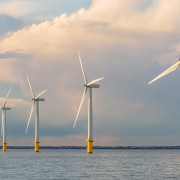 Climate: The Time For All-Out Mobilization
Climate: The Time For All-Out Mobilization
While finance has a key role to play to tackle the climate change challenge, Mirova’s Climate Ambition strategy is an equity strategy aiming at decarbonizing the economy.
 Equities: Performance Drivers Analysis
Equities: Performance Drivers Analysis
Earnings per share, financial multiples, dividend: what have been the biggest contributors to equity market growth over the recent years? Maximizing your total return requires a good allocation and a good understanding of these different performance factors.
 ESG – Transition Your Portfolio for Tomorrow's World
ESG – Transition Your Portfolio for Tomorrow's World
Amber Fairbanks, Portfolio Manager, CFA® at Mirova US, talks to Citywire about their Global Sustainable Equity strategy and what sustainable investing means to them.
 Investment Outlook – October 2021
Investment Outlook – October 2021
Discover Loomis Sayles’ latest quarterly outlook.
 Bridging the Cybersecurity Gap for Critical Infrastructure
Bridging the Cybersecurity Gap for Critical Infrastructure
Our connected world means it is now possible for unwanted actors to infiltrate power stations, electricity grids and maybe even democratic elections.
 A New Momentum for Value Investing
A New Momentum for Value Investing
David Herro from Harris Associates explains why value investing may be reaching a new momentum.
 Biodiversity: The Missing Piece in the ESG Puzzle
Biodiversity: The Missing Piece in the ESG Puzzle
Sidelined by investors’ focus on carbon emissions, biodiversity can no longer be ignored.
 Gen Z: Who Else ?
Gen Z: Who Else ?
This generation that never knew a world without internet is considered to be more socially and environmentally aware.
 Investment Outlook – July 2021
Investment Outlook – July 2021
Discover Loomis Sayles’ latest quarterly outlook.
 A Tech Odyssey
A Tech Odyssey
The pandemic witnessed faster adoption of certain technologies but their sustainability can be quite an odyssey, as solutions never come without risks
 Asia High Yield Outlook
Asia High Yield Outlook
Asia’s Road to Recovery – Uneven but in the Right Direction.
 How ESG Supercharged a Shiller Strategy
How ESG Supercharged a Shiller Strategy
Combining smart beta with ESG filtering and carbon reduction techniques shown to enhance returns.
 The G Factor
The G Factor
Today’s world is changing, led by long term transitions: demographic, technological, environmental and related to corporate governance.
 Shiller Barclays CAPE® US Sector Value: A Switching Strategy Between Value and Growth
Shiller Barclays CAPE® US Sector Value: A Switching Strategy Between Value and Growth
Finding the right timing to switch from a Growth to a Value style (and conversely) in portfolios may be challenging for investors. Not for the Shiller Barclays CAPE US Sector Value Strategy.
 Stock Picking in the US Market and the Effect of Passive Investments
Stock Picking in the US Market and the Effect of Passive Investments
Has stock picking in the US equity market become too complex that investors have finally decided to look at this asset class only through the lens of passive investment?
 Investment Outlook - October 2020
Investment Outlook - October 2020
Economic activity rebounded sharply over the third quarter, pushing the global economy out of the downturn phase of the credit cycle.
 Loomis Sayles Global Equity Opportunities: A Long-term, Best-Ideas Approach
Loomis Sayles Global Equity Opportunities: A Long-term, Best-Ideas Approach
This strategy seeks attractive long-term opportunities through a highly collaborative best-ideas approach grounded in fundamental research.
 Investment Outlook - July 2020
Investment Outlook - July 2020
The global economy is transitioning from the downturn phase of the credit cycle into credit repair.
 Sustainable Global Equities: The Final Frontier
Sustainable Global Equities: The Final Frontier
Core ESG equity portfolios can outperform both ESG benchmarks and financial indices.
 Sustainability Investing Beyond COVID-19
Sustainability Investing Beyond COVID-19
In the face of coronavirus lockdown and resulting economic malaise, multiple data shows the sustainability sector is outperforming the wider market. Yet not all ESG investment managers are the same. Many continue to invest in poor ESG-rated industries while others do not – and some strategies are therefore proving to be more resilient.
 Loomis Sayles - Growth Equity Alpha Thesis 2020
Loomis Sayles - Growth Equity Alpha Thesis 2020
For investors, a major challenge is to identify those portfolio managers who are most likely to deliver superior risk-adjusted returns in the future. Understanding how an investment philosophy informs a manager’s decision-making can provide meaningful insights into how and why a particular manager generates alpha.
 The Comeback Power of Subscription
The Comeback Power of Subscription
Both consumers and businesses are subscribing more and more to products and services. This Insight of Thematics AM shines the light on some of the long term factors that are driving the broad adoption of subscription based models across a nice mix of industries.
 Loomis Sayles Investment Outlook Q1 2020
Loomis Sayles Investment Outlook Q1 2020
We believe the expansion phase of the credit cycle is over. Several countries are now heading into downturns, largely because of the demand shock from Covid-19.
 The Case for European Financials
The Case for European Financials
Harris Associates, which is exposed through its equity strategies to some of the strongest European banks, explains why they still believe the European financials can provide strong returns for their shareholders in spite of the coronavirus crisis.
 Value Investing – Is It Different This Time?
Value Investing – Is It Different This Time?
A value investor usually requires a substantial price discount at the company’s intrinsic value. But the latter exceeds the mere accounting value of its tangible assets.
 Value vs Growth
Value vs Growth
Are we at the dawn of a cyclical change?
 What Problems for Life Insurers in the Euro Zone?
What Problems for Life Insurers in the Euro Zone?
If neither the structure of life insurers’ assets changes, nor the level of long-term interest rates, the attractiveness of life insurance for savers may rapidly diminish.
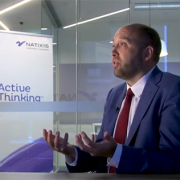 ESG: Aligning Ideals to Investment Goals
ESG: Aligning Ideals to Investment Goals
Jens Peers explains how divestment from conventional resources and business models, must also be accompanied with strategies for investment into sustainable solutions for the future.
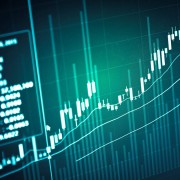 Shiller Barclays CAPE® US Sector Value Strategy in Value Regimes
Shiller Barclays CAPE® US Sector Value Strategy in Value Regimes
In this study, Ossiam has run two conditional models regressions of the Shiller Barclay's CAPE® US Sector Value Strategy over standard factor models and considered the regime-dependend nature of the Value premium.
 Safeguarding Our Future
Safeguarding Our Future
The purpose of this paper is to highlight the growing threat of natural disasters to human safety and explore how technological innovation and adaptation are enabling an effective response.
 The Winners and Losers of the Sustainable Transition
The Winners and Losers of the Sustainable Transition
The Schumpeterian concept of Creative Destruction is alive and well and the waves of innovation are becoming both faster and more violent, especially those backed by large-scale social movements such as climate change.
 5 Reasons Why Active, Long-Term Value Investors Shouldn’t Be Worried
5 Reasons Why Active, Long-Term Value Investors Shouldn’t Be Worried
In 1983, the S&P 500® hit an all-time high of 166. Anyone who said then “I’m too smart to buy into the market near an all-time high – I’ll wait for it to fall 10%” – is still waiting. It never fell 10%.
 Investing in Global Equities with a Thematic Lens
Investing in Global Equities with a Thematic Lens
Some markets are growing faster than the broader global economy due to a range of long-term, secular growth drivers.
 Loomis Sayles Investment Outlook Q2 2019
Loomis Sayles Investment Outlook Q2 2019
Most asset classes have earned strong total returns year to date and could continue to rally through year-end.
 Value Investing in Emerging Markets: Lessons from History
Value Investing in Emerging Markets: Lessons from History
Daniel Nicholas, Client Portfolio Manager at Harris Associates, looks back to the volatility in Asian markets during the 1990s and draws six key conclusions for investing in Emerging Markets.
 Loomis Sayles - Growth Equity Alpha Thesis 2019
Loomis Sayles - Growth Equity Alpha Thesis 2019
Continuing to seek risk-adjusted excess returns.
 The New ESG: Methods for Investing in a Changing World
The New ESG: Methods for Investing in a Changing World
An insightful approach to ESG investing may require deeper analysis of societal trends and business fundamentals.
 Multi-Factor Portfolios: A New Factor?
Multi-Factor Portfolios: A New Factor?
Limits of the static approach: Assessing the value added of a multi-factor portfolio from a performance-agnostic point of view.
 Empowering Women through Listed Equities
Empowering Women through Listed Equities
There is a growing consensus that educating and employing larger numbers of women can lead to economic growth.
 Machine Learning Meets ESG
Machine Learning Meets ESG
How computing power can extract alpha from complex ESG data.
 Accounting for Intangible Assets: The New Value Investing
Accounting for Intangible Assets: The New Value Investing
Harris Associates believes that the most significant investments firms are making today are value-creating intangible assets like intellectual property
 Loomis Sayles 2019 Sector Teams Outlook
Loomis Sayles 2019 Sector Teams Outlook
Loomis Sayles' sector teams return scenarios and relative value recommendations for 2019
 Five Myths About U.S. Large Caps
Five Myths About U.S. Large Caps
The case for investing in U.S. large-cap stocks is encountering scepticism.
 The Disrupted, the Disruptors and the Supercharged
The Disrupted, the Disruptors and the Supercharged
A wave of extreme digitisation is disrupting companies’ business models.
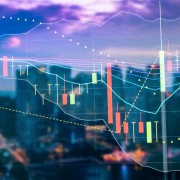 Understanding Smart Beta Returns
Understanding Smart Beta Returns
Ossiam Research Publication
 CDC Pensions and the Future of UK Retirement
CDC Pensions and the Future of UK Retirement
Collective defined contribution (CDC) is part of the fabric of Dutch society. Could it be exported to the UK?
 Emerging or Submerging? For Investors, That is the Question
Emerging or Submerging? For Investors, That is the Question
The developed economies of Europe, US and Japan no longer have a monopoly on invention and progress. The New World is being built on a stage far, far away. The world is not just changing, it is being reinvented.
 Low vol Equity: There's Another Way
Low vol Equity: There's Another Way
"Put-write" strategies have nearly kept pace with US equities, but with fewer drawdowns.
 Emerging Equities
Emerging Equities
Ostrum AM focuses on stockpicking and avoids market "noise".
 Time to Re-invent the Default Wheel?
Time to Re-invent the Default Wheel?
How a combination of member profiling and applying a risk-first investment approach improves member outcomes.
 ESG Criteria to Combine Search for Return and Long-term Impact
ESG Criteria to Combine Search for Return and Long-term Impact
An interview with Mirova's CIO.
 Indices in Hot Water
Indices in Hot Water
The carbon footprint of the major equity indices exceeds the +2°C objective of the Paris Climate Agreement (COP 21).
 Passive is Good for Active
Passive is Good for Active
Passive investing may not be all that bad for active management.
 Active Share
Active Share
How passive is your active manager?
 Mid Caps are the New Small Caps
Mid Caps are the New Small Caps
Vaughan Nelson insight.
 The Real Impact of Carbon on Portfolios
The Real Impact of Carbon on Portfolios
Improved assessment of carbon impact could spur ESG investment and drive innovation.
 Institutional Investors and the Technological Tidal Wave
Institutional Investors and the Technological Tidal Wave
With the rise of artificial intelligence, nanotechnologies and genomics, we are at the dawn of a period of intense technological progress in life sciences.
 How to Assess How Active a Portfolio Is?
How to Assess How Active a Portfolio Is?
Not all high active share managers are created equal.




